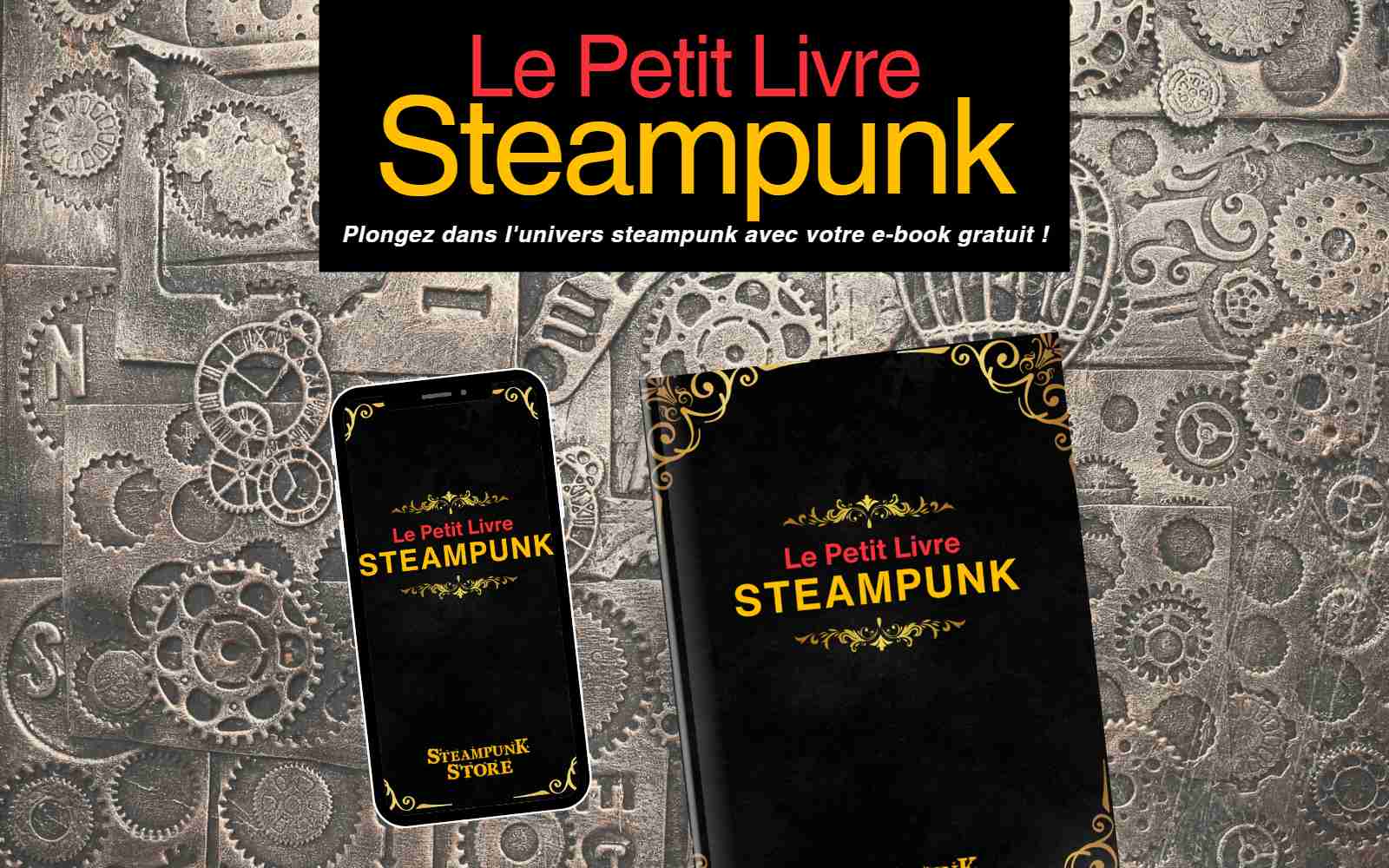
Steampunk fashion emerges as a subcultural manifestation within the broader steampunk movement, representing an intricate synthesis of romantic nostalgia for the Victorian period and the fantastical elements derived from 19th-century industrial innovation. This aesthetic paradigm operates within a retrofuturistic framework that transforms conventional Victorian styling into something extraordinary and otherworldly.
During conventions and gatherings, devoted steampunk enthusiasts craft comprehensive personas from head to toe, incorporating not merely garments but entire ecosystems of accessories including period-appropriate hairstyles, distinctive jewelry, and carefully curated makeup. The steampunk aesthetic further enriches itself by drawing inspiration from adjacent subcultures such as gothic, punk, and post-apocalyptic movements, creating a unique synthesis of influences.
Defining Steampunk Clothing
Steampunk clothing represents a sophisticated form of speculative fashion that reimagines 19th-century attire through the lens of alternative history. It encompasses garments that blend traditional Victorian fashion elements—corsets, bustles, frock coats, and waistcoats—with anachronistic technological accessories such as brass goggles, mechanical timepieces, and industrial hardware, creating an aesthetic that suggests a world where steam power continued to dominate technological advancement.
Retrofuturistic Universes and the Steampunk Current

Within steampunk universes, authors and artists construct elaborate alternative histories where steam-powered machinery serves as the primary technological foundation, while aesthetic sensibilities remain firmly rooted in the sophistication of the Victorian era. These imaginative landscapes frequently feature airships, flying contraptions, complex mechanical apparatuses, period-appropriate clothing, and distinctive accessories including pocket watches, protective eyewear, and the iconic top hat.
As Michel Foucault reminds us in his exploration of "heterotopias," these alternative spaces serve not merely as entertainment but as laboratories for examining the relationship between technology, society, and human aspiration. Steampunk clothing becomes the material manifestation of these speculative spaces.
Historical Evolution of Steampunk Style and Garments

Initially, women's steampunk clothing—including bustiers, corsets, blouses, bodices, jackets, and other garments—was predominantly handcrafted and customized by individual artisans. However, as the steampunk movement gained cultural momentum, entrepreneurs and established fashion houses recognized its commercial potential and began mass-producing steampunk apparel for online and retail distribution.
Since the genre's emergence, the fundamental aesthetic principles of steampunk have remained remarkably consistent. New literary developments and advances in science and technology have introduced subtle evolutionary changes, yet the core visual language persists. Although the genre achieved widespread recognition only in the late 20th century, steampunk fashion existed in nascent forms much earlier.
During the 1980s and 1990s, steampunk style developed alongside gothic and punk movements, creating fascinating intersections and hybrid expressions. Cyberpunk and dieselpunk emerged as related variants during this formative period, each offering distinct technological and temporal perspectives.
Victorian Era Inspiration in Steampunk Design

Steampunk fashion draws profound inspiration from the mid-19th century Victorian period, incorporating signature elements such as corsets, full skirts, and sophisticated men's suiting. The creative ingenuity of this historical era provides steampunk with its distinctive character and transforms contemporary wardrobes into expressions of temporal speculation. Victorian fashion was characterized by flowing, full-length dresses, majestic bodices, lace-adorned jackets, and delightfully vintage sensibilities.
The redingote, or fitted coat, extended over the hips and only occasionally matched the fabric of the accompanying skirt. By the early 1860s, bodices typically terminated at the waist, introducing new stylistic innovations including the Garibaldi blouse. Simultaneously, skirt hoops adopted elliptical shapes with significantly fuller backs and narrower front silhouettes.
The subsequent conical skirts also provided inspiration for contemporary steampunk interpretations. By the early 20th century, flared hemline skirts gained popularity. Women's formal attire was sometimes tailored with masculine influences to convey authority and strength. Evening wear featured elaborate decorations including sparkling beads, ornate bracelets, and eye-catching embroidery.
Steampunk Women's Outfit: Beginner's Guide
Literary Inspiration and Canonical Influences
The works of late 19th-century writers including Robert Louis Stevenson, G.K. Chesterton, Sir Arthur Conan Doyle, and Jules Verne rank among the most influential sources for steampunk fashion. Science fiction critics John Clute and Peter Nicholls have noted that steampunk draws from what they term "a strain of nostalgia" that romanticizes technological possibility.
However, modern steampunk literature, which truly began in the 1980s, has equally influenced fashion developments throughout the 1990s and beyond. Contemporary steampunk writers are credited with creating fantastical narratives that borrow from Victorian aesthetics while incorporating breathtaking action sequences and elaborately detailed baroque expeditions. Kevin Jeter's novel "Morlock Night," published in 1979, is widely considered the first true steampunk novel and the catalyst for the movement's emergence.
Aesthetic Diversity in Steampunk Fashion for Women and Men

Like its counterparts in other art forms, particularly literature, steampunk fashion is fundamentally based on alternative history aesthetics—what scholars term "uchronic" design. While critics debate whether it is rooted in fantasy literature, certain elements suggest that portions of its aesthetic derive from books and films presenting alternative histories through fantastical frameworks. Interest in steampunk aesthetics may also stem from the fashion industry's renewed fascination with Victorian spiritualism during the 2010s.
Several archetypal characters populate the steampunk fashion landscape: the intrepid explorer equipped with colonial helmet, telescope, brass-fitted boots, and field glasses; the debonair aviator adorned with bird-inspired gadgets, leather helmet, brass goggles, and canvas coat; and the eccentric scientist sporting laboratory attire complemented by utility belts for various instruments and apparatus.
Stylistic Variations and Subcultural Intersections

Steampunk represents a sophisticated amalgamation of influences spanning multiple historical periods and subcultural movements. The clothing style incorporates the essence of 19th-century character archetypes—explorers, soldiers, aristocrats, countesses, and various urban personas—while integrating elements from punk, contemporary street fashion, burlesque, gothic, fetish, and vampire subcultures.
Lolita fashion, which represents a particular expression of feminine youth culture, shares certain connections with steampunk styling. Although both draw inspiration from the Victorian era, Lolita fashion emphasizes modesty and focuses on purchasing garments from commercial retailers, contrasting with steampunk's traditional emphasis on creating personalized ensembles from thrift store discoveries and handcrafted modifications.
Essential accessories for completing a steampunk ensemble include:
- Vintage-inspired jewelry with Victorian aesthetic elements
- Period-appropriate accessories reflecting 19th-century sensibilities
- Protective eyewear featuring intricate patterns and round, oversized frames
- Victorian headwear including the iconic top hat and other period pieces
- Leather footwear or vintage-style studded boots
Toward an Authentic Steampunk Culture

In 2005, Kate Lambert, professionally known as "Kato," established the first dedicated steampunk clothing company, "Steampunk Couture," which masterfully blended Victorian, post-apocalyptic, and tribal influences with science fiction elements. This pioneering venture marked steampunk's transition from subculture to commercial viability.
By 2010, prestigious haute couture houses including Prada, Dolce & Gabbana, Versace, Chanel, and Christian Dior began incorporating steampunk and neo-Victorian styles into their runway presentations, signaling the movement's arrival in mainstream fashion discourse.
Since the early 2000s, steampunk fashion has been frequently featured in cinema, photography, and television productions. Guy Ritchie's Sherlock Holmes films and the television series Warehouse 13 serve as prominent examples of this cultural penetration.
Films such as The Golden Compass, Van Helsing, Sweeney Todd, and The Three Musketeers have incorporated significant steampunk elements. The movement has also found expression in music, notably in Lindsay Stirling's "Roundtable Rival" music video. Members of the alternative band Abney Park perform in full costume and are recognized as leading contemporary steampunk musicians.
The police procedural series Castle featured a steampunk-themed episode in which the protagonist dons complete steampunk attire after encountering a secret steampunk society, demonstrating the aesthetic's penetration into mainstream entertainment.
Contemporary Steampunk Fashion Trends

Steampunk clothing has undergone continuous transformation and evolution while maintaining its distinctive imaginative character. This represents a vestimentary culture inspired by the aesthetics of a romanticized past, yet perpetually reinterpreted through contemporary lens. Modern fashion critics have actively sought to deconstruct steampunk both as terminology and philosophical framework, creating productive tensions between historical reenactment enthusiasts and science fiction cosplayers with their shirts and leggings in retrofuturistic colorways.
Since the earliest steampunk conventions, enthusiasts have crafted elaborate steampunk character personas. Contemporary steampunk garments emphasize leather and metal construction over cotton or natural fabrics, reflecting both durability concerns and aesthetic preferences. More recently, steampunk has developed connections with fetish communities, queer culture, and modern paganism, expanding its cultural resonance.
In 2010, women's steampunk fashion entered the haute couture market through designer John Galliano, who incorporated steampunk elements into his spring collection for Christian Dior. Another designer associated with steampunk aesthetics is Jean Paul Gaultier, who frequently features corsets in various materials throughout his collections. By 2015, steampunk fashion began influencing diverse cultural spheres beyond its subcultural origins.

Discover the collections in our online boutique, which serves as the premier destination for enthusiasts of accessories and brands specializing in Steampunk Clothing for Women.
Thank you for joining this intellectual exploration, fellow steamers. May the power of imagination and the elegance of mechanical innovation continue to inspire your sartorial adventures. Please consider sharing this article if it has illuminated new perspectives on this fascinating cultural phenomenon!
Sources and References
- Foucault, Michel. "Of Other Spaces: Utopias and Heterotopias" (1967)
- Latour, Bruno. "Science in Action: How to Follow Scientists and Engineers through Society" (1987)
- Clute, John and Peter Nicholls. "The Encyclopedia of Science Fiction" (1993)
- Victorian fashion history archives and textile studies
- Contemporary steampunk cultural analysis and subcultural studies
Scholar of Speculative Fashion
Cultural historian and aesthetic theorist
Specialist in alternative history fashion movements








